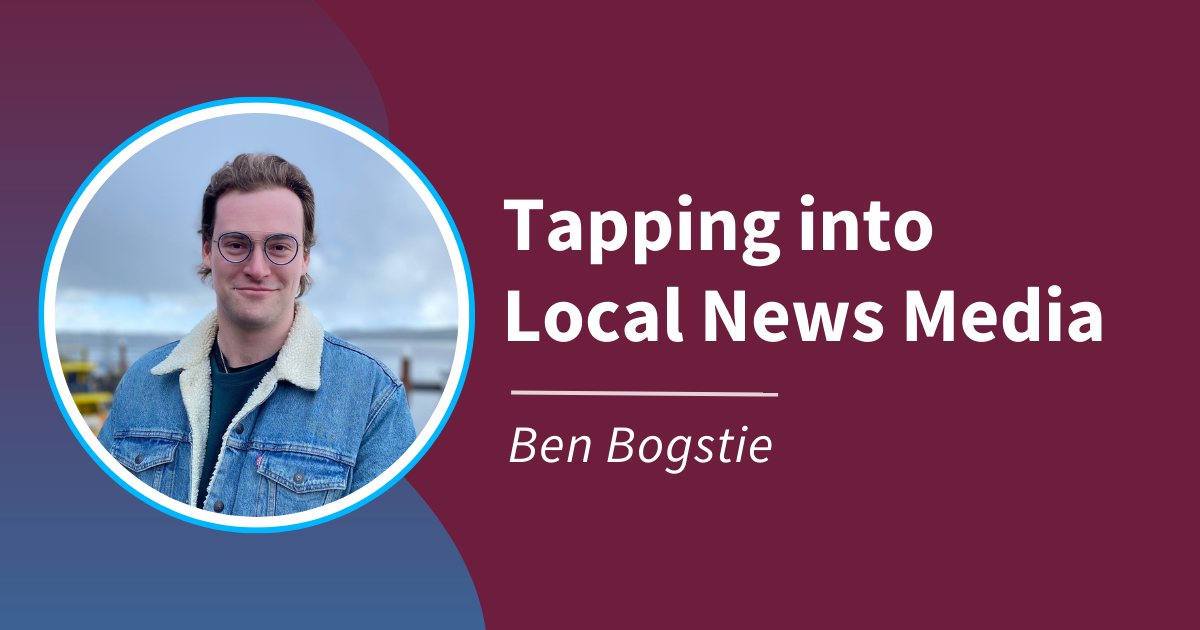Tapping Into Local News Media

Before I joined Strategies North, I moved to northwest B.C. to work as a journalist for a local newspaper. During my time at journalism school, there was a strong emphasis on TRC Call to Action #86 which asks Canadian journalism schools to ensure students are taught the history of Indigenous peoples, including the history and legacy of residential schools, and decolonizing journalism by emphasizing in-depth Indigenous stories and raising Indigenous voices. But it hasn’t always been that way.
One of the tools that we as students were exposed to is the online resource called Reporting in Indigenous Communities, created by veteran Indigenous journalist Duncan McCue. It is a fact that until recently, nearly all news media reporting about Indigenous people has been rooted in stereotypes. That reality has had a significantly negative impact on the public’s understanding of Indigenous communities by perpetuating harmful stereotypes. Sadly, mainstream media in Canada has a historical track record of overlooking meaningful, insightful and important Indigenous voices and stories.
However, journalism’s relationship with Indigenous stories, communities, issues and people is changing. Not only are there more Indigenous reporters in newsrooms across the country, more journalists have training in Indigenous reporting, and understand the responsibility and consequences that come with their work. Most of the journalists I have interacted with as a reporter and editor hold a deep passion for reconciliation, and see the importance of their storytelling in that process. As a result, they are doing a better job.
In light of those developments, there are ever growing opportunities for Indigenous communities to use news media as a powerful tool. Local media coverage has the ability to educate, shape perceptions, and sway public opinion. It can build goodwill and understanding between groups, and issues that make the news usually receive more interest and attention from the public and policymakers.
To best make use of news media as an organization, there are a few things to consider:
- Build a relationship with local news reporters and editors so that media outlets contact your group for its perspective on issues. Always make an effort to comment promptly when given the opportunity.
- Keep an up to date contact list of reporters, editors and publishers in your area.
- Make sure to give local media sufficient time to prepare before an event takes place.
- Look for sidebar ideas, which dovetail with another news story. Think about how major news stories relate to your group or its activities and share that with local media. Sidebar stories have a higher likelihood of making it into the news. For example, if the main story is a flood, a story about a community member helping Elders evacuate their homes would be a sidebar story.
- Write news releases in everyday English and make sure to answer any basic questions a reporter or member of the public might have (who, what, when, where, why). If possible, include a photo.
- Summer and the Christmas seasons are traditionally slower times for news, so there is a higher chance of getting the media’s attention. Local media reporters often have a quota of stories that they are required to write, so do not hesitate to reach out with ideas related to your organization or community.
- In B.C., most local news sources are owned by companies that control some or many other news properties (Black Press Media, Glacier Media, Bell Media etc.), so a story in one community newspaper has the potential to appear province-wide.
- Letters to the editor, op-eds and opinion pieces are other methods to gain exposure in local newspapers besides standard news stories.
Building trusting relationships and opening lines of communication with local media outlets takes work, but the benefits to Indigenous communities can make it well worth the time and effort. If you have questions about engaging with media, feel free to send me an email at b.bogstie@strategiesnorth.ca.